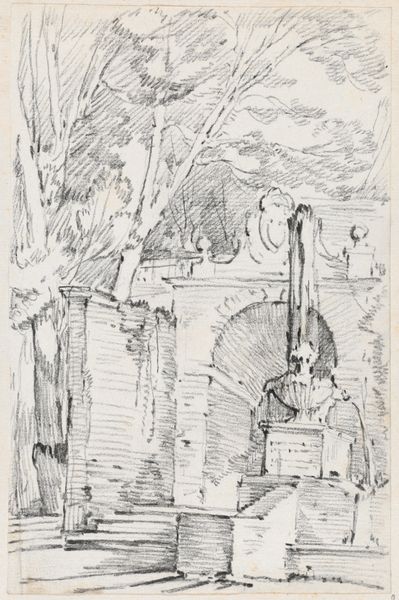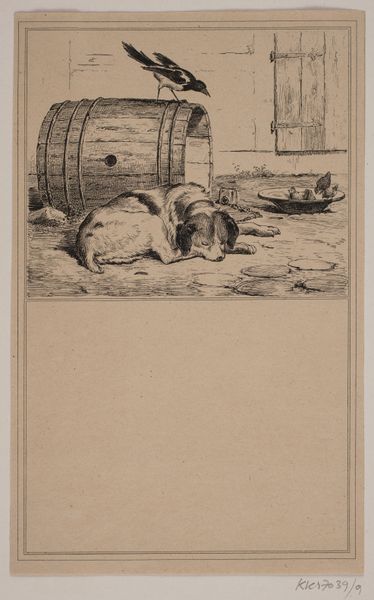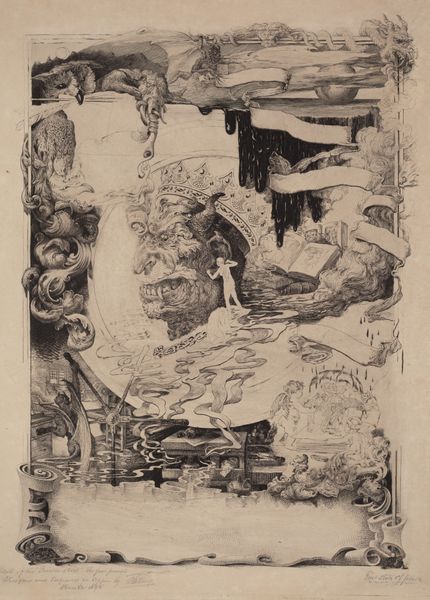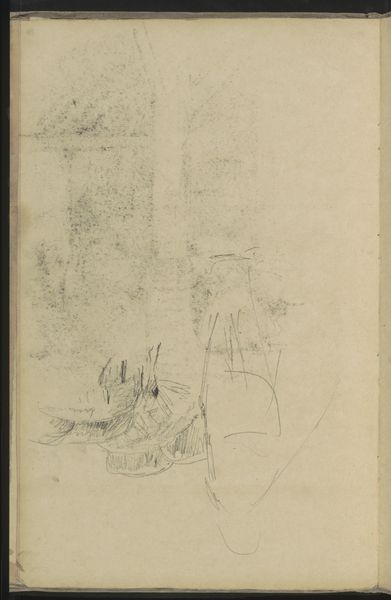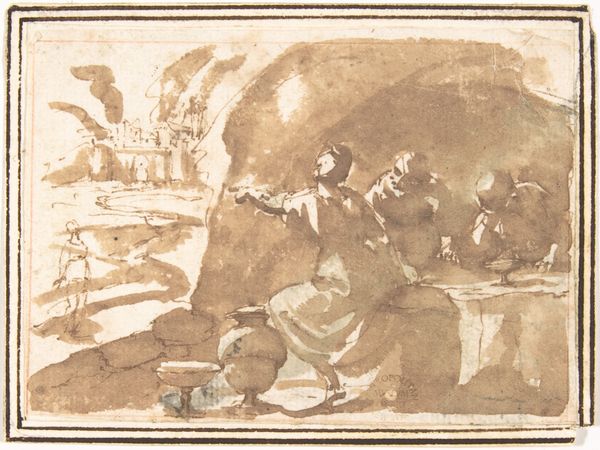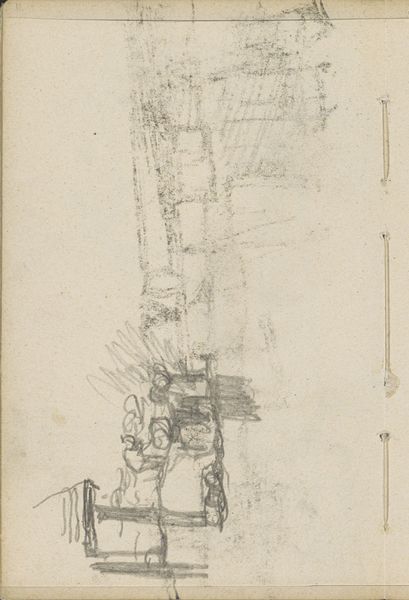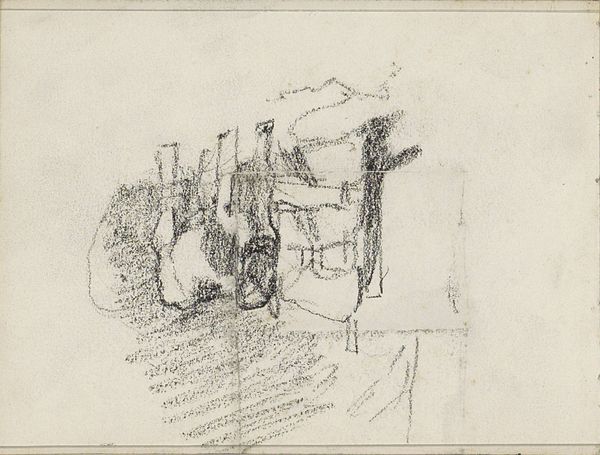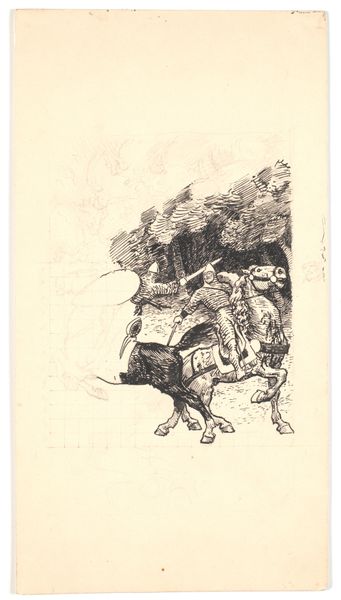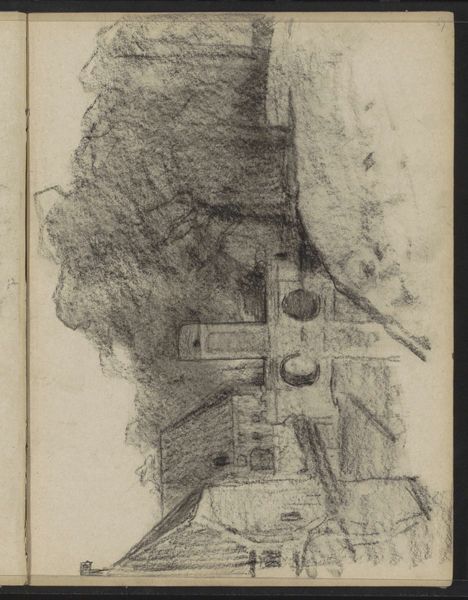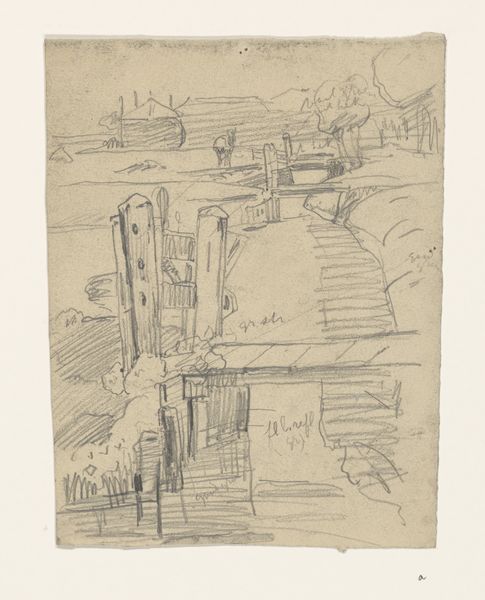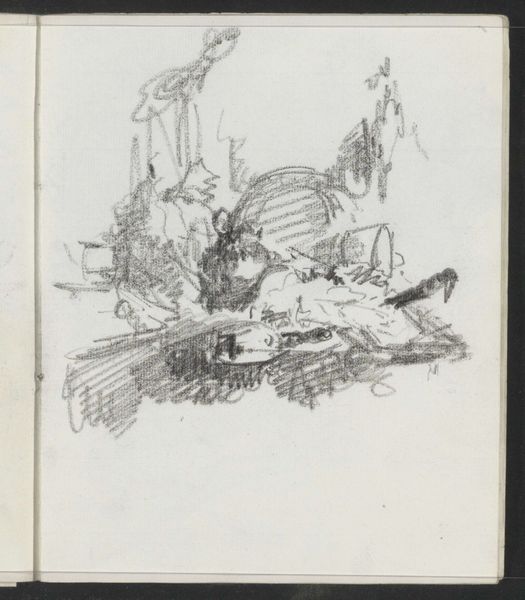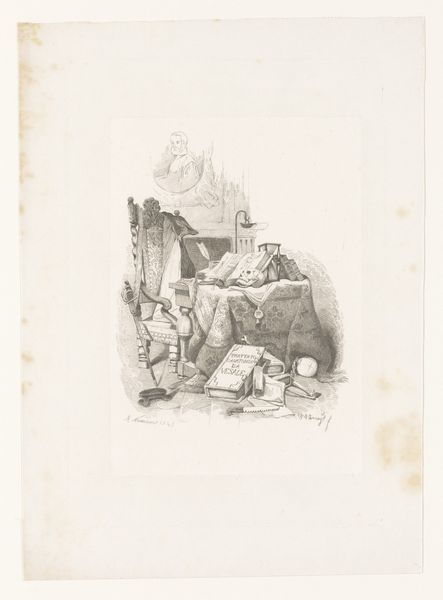
drawing, ink
#
drawing
#
aged paper
#
toned paper
#
light pencil work
#
dutch-golden-age
#
pencil sketch
#
etching
#
personal sketchbook
#
ink
#
ink drawing experimentation
#
pen-ink sketch
#
sketchbook drawing
#
sketchbook art
Dimensions: height 215 mm, width 159 mm
Copyright: Rijks Museum: Open Domain
Curator: So, here we have Willem Kalf’s “Still Life with Utensils in a Barn,” created sometime between 1632 and 1693, rendered with ink on toned paper. Isn’t it evocative? Editor: It is! It has this sort of intimate, behind-the-scenes feel to it, like we’re stumbling upon a forgotten corner. So…what catches your eye about it? What stories do you think it tells? Curator: For me, it’s like a whisper from the past, almost a memory caught in sepia tones. Look how Kalf uses light and shadow! The textures…aren't they incredible? The roughness of the wood, the sheen of the metal… It feels almost tactile, doesn’t it? It’s more than just a drawing of objects; it’s a glimpse into 17th-century Dutch life, into their resourcefulness. Do you get that too? Editor: Absolutely, the details are captivating. It’s easy to overlook sketches, but the deliberate choices here… the composition isn’t accidental, is it? It’s almost theatrical in a way. Curator: That's spot on. Kalf had an eye for composition. It’s like a stage set, each object carefully placed. The lighting, the dramatic contrast… he knew how to create atmosphere. To me, these ordinary objects, when captured in this manner, begin to transform into characters within a narrative. It suggests a deeper meaning, right? What do *you* make of the narrative? Editor: It definitely gives new depth to something seemingly mundane. Curator: I agree. This drawing isn’t just about utensils; it’s about light, shadow, and memory. Editor: I came into this discussion not expecting to view sketching so deeply, so thanks for that!
Comments
No comments
Be the first to comment and join the conversation on the ultimate creative platform.
